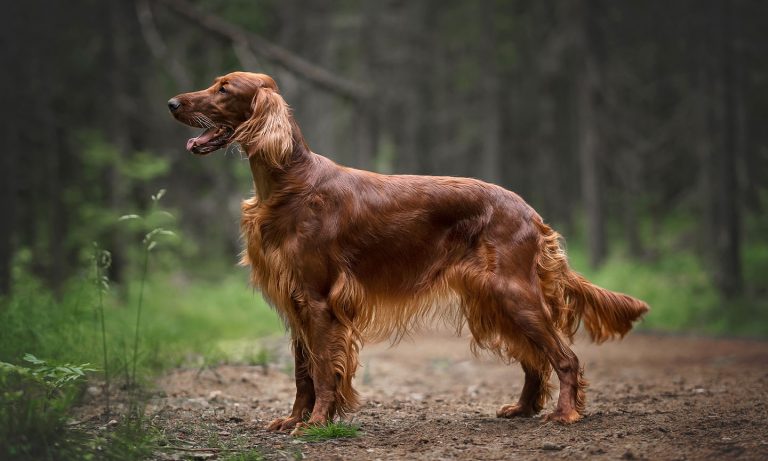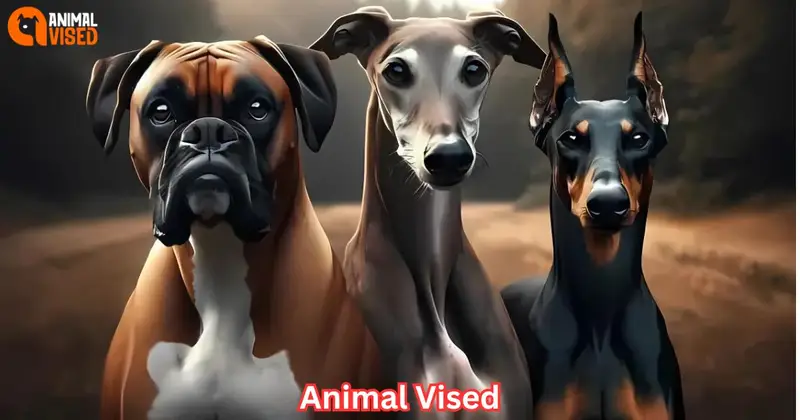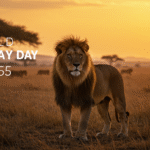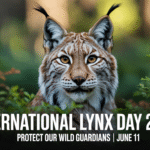Single Coat Dogs fur is one of the quintessential parts of his appearance. There’s the color, the length, the texture, and the patterns. The coat also determines his grooming needs and how he handles different weather conditions. The two different coat types are grouped into single coats and double coats.
Coat types can be traced back to the breed’s original purpose and habitat in most dogs. The double coat has an undercoat of soft, thin fur for insulation and an outer coat of “guard hairs,” making them better suited for cold weather or running through brush. Single coated dogs have only the outer layer of “guard hairs.”
Read More: Sitter Lost Dog

Single Coat Dogs
Single coated dogs are those with only one layer of fur, which is often referred to as hair instead. The coat is dense and the hair can be any length or texture. For some idea of the variety in hair types among single coated dogs, all of these breeds sport one coat:
- Poodles
- Chihuahuas
- Greyhounds
- Spaniels
- Bulldogs
Among single coated dogs, those with short hair are often extremely easy to groom. Longer coated dogs, especially when they have silky hair like an Afgan hound or pomeranian, require daily brushing and frequent clipping to keep their coats neat.
Dogs with a single coat are better equipped to handle warmer weather as their lack of an undercoat limits their insulation. A coat might be necessary for these dogs in cold winter climates.
In general, single coated dogs shed less as they won’t lose their undercoat. Many are said to be hypoallergenic as well, but this may not be the case for every single coated dog.
Dogs with Double Coats
Sometimes described as having fur instead of hair, these dogs gain additional protection from their downy undercoat and more robust overcoat. Both coats come in multiple lengths depending on the breed, such as:
- Border Collies
- Labrador Retrievers
- Huskies
- Corgis
- German Shepherds
Many double coated dogs require frequent grooming to keep the undercoat from matting and brush out any dead hairs. These dogs may also shed extensively. Seasonally, many breeds “blow,” or shed, their undercoat as the weather changes.
If your dog isn’t one of the breeds listed above or you have a mix, you can determine what type of coat he has by gently pulling back the fur. Dogs with a double coat will have shorter hairs near the skin with a different texture than their outer fur.
It’s worth knowing your dog’s coat type so that you can ensure you are following the correct grooming routine – from brushing to bathing to trimming – to keep him looking his best.
Dog Hair vs. Fur
If you want to be technically correct (…and people who like being technically correct would say that’s the best kind of correct), ‘hair’ and ‘fur’ are the same things. If you looked at them under a microscope, or analyzed them chemically, you’d find no difference.
Then what do people mean by dogs with hair versus dogs with fur? They’re usually referring to the difference between a single coat and a double coat. A single layer of coat is sometimes called a ‘hair’ coat. It might grow long or stay short, cascade in waves or form bouncy curls, feel silky smooth or rough to the touch, but the hair all over the dog is basically the same.
Other dogs have a double coat: an outer layer of thicker guard hairs and a different undercoat of thin, lightweight hairs. The undercoat is like the down on some birds that grows beneath the larger, thicker, more weatherproof feathers.
Dog Coat Types
Long, Medium, and Short Coated Dogs

Long coated dogs usually showcase the most dramatic coifs. Afghan Hounds, Old English Sheepdogs, and Bearded Collies have long coats that require regular grooming to keep them neat and free of mats. Owners of dogs with long coats, but who don’t show their dogs, often opt to crop the fur short into a puppy cut for ease of care.
Short coated dog breeds are generally smooth coated. Their fur is naturally short, lays close to the body, and is often glossy. Good examples include Pointers, Doberman Pinschers, and Boxers. If your dog has a combo single/short coat, he’ll definitely need a dog jacket when it’s cold outside.
The fur of medium coated dogs falls in between. If they have an undercoat, the top coat may stand away from the body, giving them a slightly puffed appearance. A dog with a medium coat requires regular brushing because the feathering on his legs and tail can become matted when ignored. Dogs with medium-length coats include German Shepherds, Golden Retrievers, and Belgian Tervurens.
Double and Single Coated Dogs

When a dog has a double coat, it means he has an undercoat that is typically shorter than his outer coat, and his hair has a dense, woolly texture. And as the name suggests, single coated dogs have only one coat, without this undercoat. Dogs of any coat length and texture may have single or double coats.
Many long-haired dogs have double coats, including the Bernese Mountain Dog and all varieties of Collie. You won’t be surprised to learn that double coated dog breeds usually leave more fur around the household. Most double coated breeds ‘blow’ their undercoats twice a year, which means they shed their entire undercoat in response to seasonal changes. Double coated dogs also require extra time and attention during grooming so the dense undercoat is fully brushed and doesn’t develop mats.
The fur on single coated dogs can be any length, from the short, single coat of the Whippet to the long, silky single coat of the Afghan Hound. No matter the length of their fur, single coated breeds often need to wear a dog jacket in winter because they don’t have the added insulation offered by an undercoat. Single coated dogs usually leave less fur on your clothes and furniture, which can make them easier on allergy sufferers. But a single coat doesn’t make a dog hypoallergenic, and some double coated breeds, such as the Airedale Terrier, are considered hypoallergenic.
Curly Coated Dogs

The swirls, curlicues, and twists on curly coated dog breeds can range from tight ringlets to pronounced curls. Long-haired dogs with slight waves in their fur (think Golden Retrievers) wouldn’t be considered curly coated. But when the waves become more pronounced, you’ve entered curly dog coat territory. The best known curly coated breeds are Portuguese Water Dogs, Airedale Terriers, and Poodles of any size. A somewhat rarer curly coated breed is the Lagotto Romagnolo.
Silky Coated Dogs

You know (and envy) these dogs when you see them. Their coats flow and cascade with the glossy sheen of a model in a shampoo commercial. The Silky Terrier is a clear example, with his long, shiny blue and tan coat. Other silky coated dogs include the Yorkshire Terrier, the Afghan Hound, and the Irish Setter. Silky coats need frequent brushing to prevent knots and to sustain their shine. But you don’t need to bathe your silky coated dog more often than any other dog, unless he relishes rolling in the mud.
Rough Coated Dogs

What most distinguishes a rough coat from other dog coat types is texture. Rough coats can be either medium length or long, but they are always coarse to the touch. A Rough Collie’s outer coat appears soft and fluffy (think Lassie), but actually feels harsh. This outer coat is weather-resistant, keeping wind and rain at bay. The coats of wire or broken coated dogs are also harsh to the touch and often classified as rough.
Wire Coated Dogs

This is another coat type where texture is the most important quality. Wire coated (also called broken coated) dogs have fur with a wire-like texture. It is harsh and stiff and stands away from the body, especially on the tail, the back of the legs, and on the face. Wire coated dog breeds often have a dapper, gentlemanly appearance because of their pronounced mustaches, beards, and eyebrows.
Examples of dogs with wire coats, or wire coated varieties, are the German Wirehaired Pointer, the Airedale Terrier, and the Wire Fox Terrier. Maintaining the wire coat’s distinct texture requires hand stripping, a time-consuming process of removing old hair so new hair can grow in its place. Clipping wire hair softens its texture over time.
Smooth Coated Dogs

Dogs with smooth coats often have short, silky hair that lays close to the body. The athleticism of smooth coated dogs is apparent, with every muscle plainly visible when the dog is in motion. Bloodhounds, Dalmatians, Great Danes, and French Bulldogs are all smooth coated breeds. Sometimes, however, smooth coated refers to a type of shorter fur in breeds with multiple coat types. A good example of this is the Smooth and Rough Coated Collie. Here, the smooth coat is not shiny or very close to the body. Instead, the coat is a shorter version of the rough coat, and still coarse to the touch.
Hairless Dogs

No discussion of dog coat types can exclude hairless dogs, such as the Chinese Crested, the Xoloitzcuintli, and the American Hairless Terrier. Because of their lack of fur and less pet dander, these dogs are popular among allergy sufferers. Hairless dog breeds are more exposed to the elements and the harsh rays of the sun than breeds with fur, and they require special skincare routines as a result. When taking a hairless dog outside, it’s important to slather on dog-safe sun protection. These breeds require frequent bathing with a mild dog shampoo, and moisturizing with dog-safe lotion to prevent dry skin. Hairless breeds must also wear a dog jacket when going outside in winter, even for short walks.
Dog Coat Troubles
Brittle, Dry, or Greasy Coat
Your dog’s dry, brittle, dull, or greasy coat may indicate an underlying problem.
One potential source of trouble could be his diet. If he is missing any micronutrients—vitamins and minerals that are necessary in the diet, but only in small amounts—the result can be a lackluster coat. High-quality commercial foods are balanced to provide the correct amounts of micronutrients.
Coat trouble could also indicate a medical problem. Thyroid conditions and parasites, for example, can affect the skin and coat. If you notice a change in your dog’s coat and he is eating a high-quality commercial diet, a trip to the vet may be in order.
Dog’s Coat Changing Colors
Some breeds change colors as they lose their puppy coats and grow in their adult coats. Dalmatians, for example, are born spot-free and grow in their spots with their adult coats.
The summer sun can bleach dogs’ hair, just like it does people’s. It is known to give black fur a reddish tint.
People with allergies are attentive to dog coat types out of necessity. They require dog breeds with hypoallergenic coats so they can welcome a dog into their family without also bringing on constant sneezing, watery eyes, and other pet allergy symptoms. But everyone should hit pause and consider a dog’s coat type before selecting a breed to bring home, and pay attention to their dog’s coat as an indicator of his health.
A dog’s coat influences the time and money you’ll spend on grooming, how much fur you’ll be cleaning around the house, whether your dog is prone to overheating in summer, and whether you’ll have to bundle up yourself and your best friend before leaving the house in winter. Make a happy transition to dog ownership by knowing what you’re getting into on all fronts—including the furry ones.
Does a Dog’s Coat Keep Him Warm or Cool?
It seems obvious that a dog’s coat will keep him warm. After all, that’s why humans wear coats made of similar furs or synthetics. And, yes, some well-insulated dog breeds do very well in the cold. But despite their built-in coat, some dogs have trouble in colder temperatures—these are often leaner dogs with thin, short coats. These four-legged friends need a dog jacket to help them regulate their temperature in chilly conditions. (Some dogs, like the German Shorthaired Pointer, can endure cold weather when exposed to it sensibly.)
But a dog’s coat can actually help him stay cool in the summer, too. Like a thermos that keeps hot food hot or cold food cold, a double coat simply provides insulation. In warmer weather, it keeps some heat at bay. That’s one reason experts don’t usually recommend shaving a dog for the summer. Double coated dogs will ‘blow coat’ (shed the thicker winter undercoat) as the weather warms. Groom his coat often during this time in order to remove the dead hair and allow maximum air circulation next to his skin. When the weather cools again he’ll lose the summer undercoat and re-grow a thick new crop for the winter.
How to Make a Dog’s Coat Shine
Want to help make your dog’s coat shiny and lustrous? Here are some tips:
- Omega-3 and -6 fatty acids. High-quality commercial foods should have these in sufficient amounts. Home-prepared dog foods and lower-quality commercial foods might not. Supplements are available; they should show results in six to eight weeks.
- Grooming. Brushing your dog frequently helps distribute natural oils throughout his coat.
Bathing. Finish off your dog’s bath with an oil-based conditioner or coat spray. Don’t go overboard with bathing, though—shampooing too often can strip the coat’s natural oils.
Conclusion:
Single coat dogs, with their unique and low-maintenance fur, offer a range of benefits that make them excellent companions for many individuals and families. Their minimal shedding and reduced grooming needs can be particularly appealing to those with allergies, busy lifestyles, or a preference for a more manageable pet care routine.
These breeds come in various sizes, temperaments, and energy levels, ensuring there is a suitable single coat dog for almost any lifestyle. From the energetic and playful Dalmatian to the loyal and gentle Boxer, each breed brings its own set of charming characteristics and qualities.
Owning a single coat dog also comes with the responsibility of understanding their specific needs. While they may require less grooming, they still need regular exercise, proper nutrition, and plenty of love and attention. Additionally, being aware of their sensitivity to extreme temperatures can help ensure their comfort and well-being.
Read More: Single Coat Dogs
FAQs:
Q: What are single coat dogs?
A: Single coat dogs are breeds that have only one layer of fur, unlike double coat dogs that have an undercoat and a topcoat. This single layer is typically shorter and smoother, making it easier to maintain.
Q: Why might someone prefer a single coat dog?
A: People might prefer single coat dogs because they generally shed less, require less grooming, and may be more suitable for individuals with allergies. Additionally, their coats are easier to maintain and keep clean.
Q: What are some examples of single coat dog breeds?
A: Some examples of single coat dog breeds include Boxers, Dalmatians, Greyhounds, Whippets, and Vizslas. Each breed has its own unique characteristics and temperaments.
Q: Do single coat dogs shed?
A: Yes, single coat dogs do shed, but typically less than double coat breeds. Their shedding is usually more consistent throughout the year rather than seasonal.
Q: How often do single coat dogs need to be groomed?
A: Single coat dogs generally require less frequent grooming compared to double coat breeds. Weekly brushing is usually sufficient to remove loose hair and keep their coat healthy.
Q: Are single coat dogs hypoallergenic?
A: While no dog breed is truly hypoallergenic, single coat dogs may be more suitable for allergy sufferers because they shed less and produce fewer allergens. However, individual reactions can vary.
Q: What are the benefits of owning a single coat dog?
A: Benefits of owning a single coat dog include less shedding, easier grooming, and potentially fewer allergy issues. They also tend to have a sleek and elegant appearance.
Q: Are single coat dogs suitable for all climates?
A: Single coat dogs may be more sensitive to extreme temperatures, both hot and cold. They may require additional protection, such as a coat in cold weather or shade and hydration in hot weather.
Q: How do single coat dogs handle cold weather?
A: Single coat dogs may need extra protection in cold weather, such as a dog coat or sweater, to help them stay warm. They may also benefit from indoor heating and cozy bedding.
Q: Are single coat dogs more prone to skin issues?
A: Single coat dogs can be more prone to skin issues, such as dryness or irritation, especially if they are not properly groomed or if they have allergies. Regular check-ups and proper skincare can help prevent these issues.
Q: What kind of exercise do single coat dogs need?
A: The exercise needs of single coat dogs vary by breed. Some breeds, like Greyhounds and Whippets, require plenty of exercise and space to run, while others may be content with daily walks and playtime.
Q: Are single coat dogs good with children?
A: Many single coat dog breeds are known for being good with children, but this can vary by breed and individual temperament. Proper socialization and training are important for any dog interacting with children.
Q: How do I care for a single coat dog’s coat?
A: Caring for a single coat dog’s coat involves regular brushing to remove loose hair, occasional baths with a gentle dog shampoo, and ensuring their skin is kept healthy and moisturized.
Q: Can single coat dogs live in apartments?
A: Some single coat dog breeds can live comfortably in apartments, especially those with lower energy levels. However, it’s important to ensure they get enough exercise and mental stimulation.
Q: Are single coat dogs easy to train?
A: The trainability of single coat dogs varies by breed. Some breeds, like Boxers and Vizslas, are known for being intelligent and eager to please, making them easier to train.
Q: What should I feed a single coat dog?
A: A balanced diet is important for single coat dogs. High-quality dog food that meets their nutritional needs is recommended. Consult your veterinarian for specific dietary advice tailored to your dog’s breed and age.
Q: How do single coat dogs handle heat?
A: Single coat dogs may be more comfortable in warmer climates but still need protection from extreme heat. Ensure they have access to shade, plenty of water, and avoid exercising them during the hottest parts of the day.
Q: Are single coat dogs good for first-time dog owners?
A: Some single coat dog breeds can be good for first-time dog owners due to their lower grooming needs and manageable temperaments. Researching specific breed characteristics can help determine the best fit.
Q: How do I know if a single coat dog is right for me?
A: Consider your lifestyle, living situation, and personal preferences when deciding if a single coat dog is right for you. Factors like exercise needs, grooming requirements, and compatibility with your family should be taken into account.
Q: What health issues are common in single coat dogs?
A: Health issues can vary by breed, but some common concerns for single coat dogs include skin allergies, hip dysplasia, and heart conditions. Regular veterinary check-ups can help manage and prevent these issues.
Q: Can single coat dogs be left alone for long periods?
A: The ability of single coat dogs to be left alone varies by breed and individual temperament. Some breeds may be more independent, while others may require more companionship and interaction.
Q: What is the lifespan of single coat dogs?
A: The lifespan of single coat dogs varies by breed. On average, many single coat breeds live between 10 to 15 years, but this can vary based on factors like genetics, diet, and overall health.










